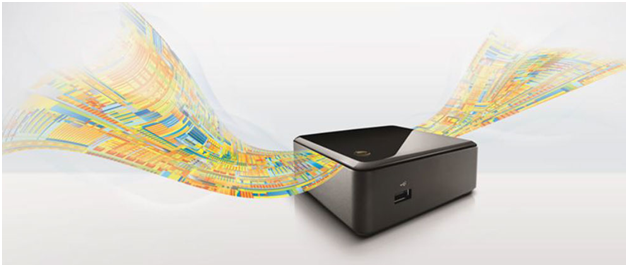When Neil Armstrong made his one small step onto the Moon in 1969 the computer that got him there had around 64 kilobytes of memory. That’s probably less than the amount contained in a modern toaster.
Even the IBM mainframe back at Mission Control that was used to calculate the launch data and monitor the progress of the mission had less memory than the USB stick in your pocket. The space programme proved that computers could be trusted to carry out complex tasks on which human lives depended, but it also serves to illustrate how the technology has advanced in the last 40 or so years.
One Small Chip
The Apollo guidance computer wasn’t the first programmable electronic machine of course, they go back to the code breaking efforts of WWII, but it was among the first to use integrated circuit microchips. What has driven advances in computing since then is the ability to pack more components onto each wafer of silicon so that more memory and more processing power is available in the same space.
This of course means that the programs run the machine can be larger and more complex so there’s even greater need for software testing. The desktop computers that began to appear in the late 1970s and early 80s paved the way for today’s use of PCs, though still relatively low powered and very expensive.
The affordable home computers that came next showed that it was possible to make a usable and relatively powerful – though still usually with no more memory than the Apollo computer – that could be used by almost anyone.
Computing In Your Pocket
By the late 1980s the PC had become an essential in most businesses and IT Support in Southgate and other areas of London and further afield across the UK and abroad were becoming essential as office applications like word processors and spreadsheets took off so agencies like http://www.pc-docs.co.uk were becoming a desirable contact to have in case any issues arose.
Although the desktop PC hadn’t shrunk much in size at this point it was becoming much more powerful. The advent of compact, affordable hard drives also meant you could store much more information without having to continually swap floppy disks.
The first portable machines, ancestors of the current laptop, appeared in the 1980s too, allowing you to take your computer with you. Though these were bulky and heavy by today’s standards they began to free PCs from the office and the home, paving the way for today’s connected, mobile world.
Computers continued to get faster and more powerful through the 1990s as graphical operating systems like Windows replaced the older command line interfaces. At the beginning of the decade PCs would have had around 640 Kb of memory – ten times that of Apollo – but by the end memory capacities of 64 megabytes – 1,000 times that of Apollo – weren’t unusual.
From then on power and memory have increased at a rapid pace, modern laptops will have three or more gigabytes of RAM and multi-core processors allowing them to multi-task. Multi-core processors are in smartphones and tablets too and even modest phones will have 512 Mb of memory – that’s around 8,000 times the memory that took man to the moon and back sitting in your pocket so you can text your friends and play Angry Birds.
